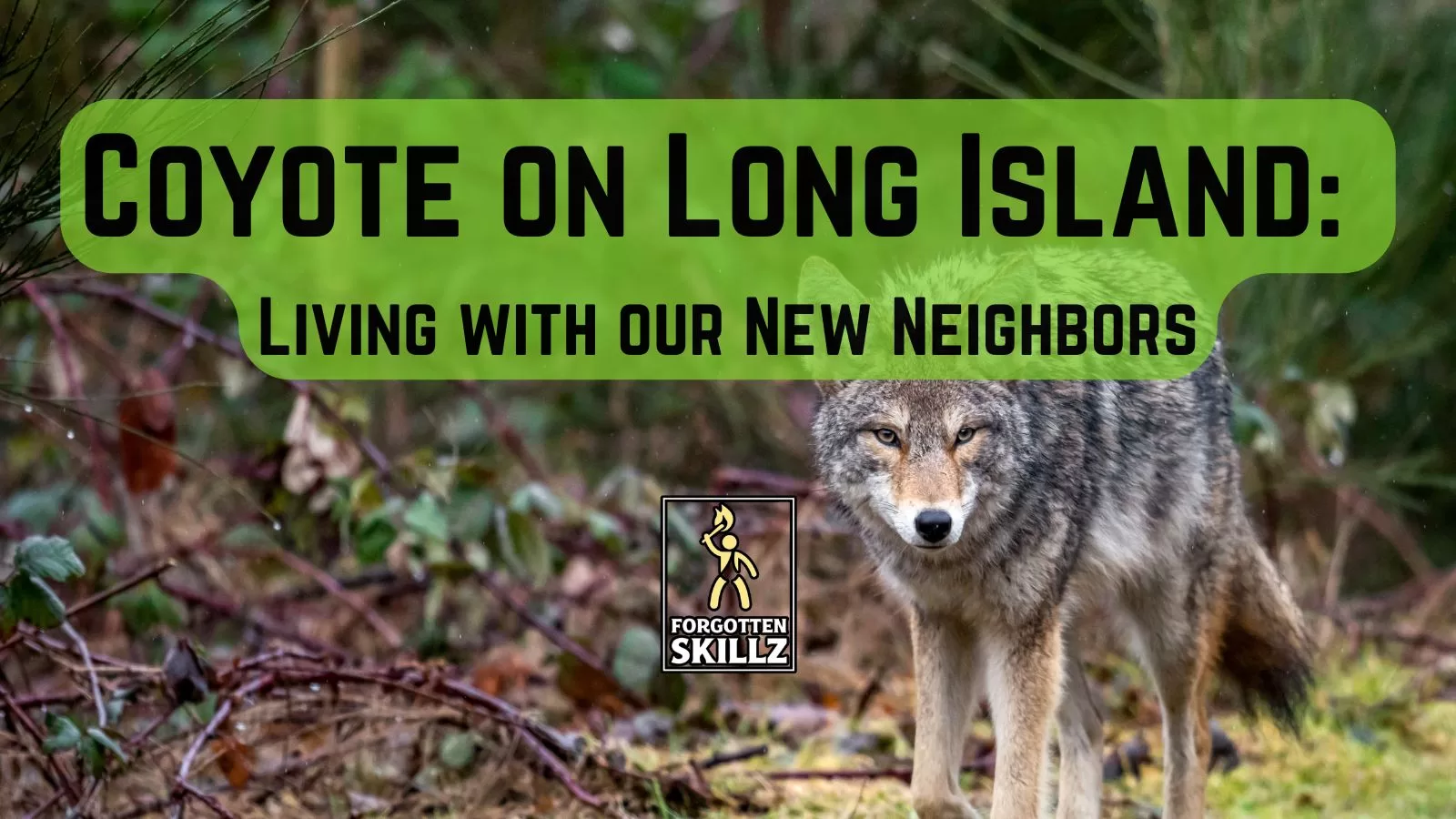Coyotes on Long Island – Living With Our New Neighbors

Coyotes, which were historically confined to the western United States, have expanded their territory and are now a notable presence on Long Island, New York. As these adaptable predators continue to extend their range, their arrival presents both challenges and opportunities for understanding how we, as humans, can peacefully coexist with this new, yet ancient, neighbor.
The Arrival of Coyotes on Long Island
The eastward expansion of coyotes began in the early 20th century, filling the ecological gap left by the eradication of wolves and other large predators. Their presence on Long Island was officially verified in the early 2000s, and they have since established themselves across various landscapes, from suburban neighborhoods to more remote wooded areas.
These remarkable animals are a testament to nature’s adaptability. While coyotes are often met with apprehension, their presence on Long Island serves as a reminder of the ever-changing natural world, compelling us to adapt alongside it.
Impact of Coyotes on the Environment
Coyotes play a crucial role in the ecosystem as mesopredators, helping manage populations of smaller animals such as rodents, rabbits, and even deer. This contributes to maintaining a balanced ecosystem, which in turn supports plant diversity and reduces the spread of disease. In areas where coyotes reside, there may even be a decline in nuisance species like feral cats, which can have detrimental effects on local bird populations.
However, the introduction of coyotes to Long Island has also raised concerns. With the absence of natural predators, coyote populations could increase unchecked, leading to more encounters with humans and pets. It’s imperative to understand the role coyotes play in the environment and to learn how to coexist with them without disturbing the delicate balance of the ecosystem.
How to Live Peacefully with Coyotes
Coexisting with coyotes requires a blend of respect, understanding, and practical action. Our ancestors understood the importance of living in harmony with the natural world, and we can draw on that wisdom as we navigate our relationship with these new neighbors.
Here are some guidelines to help you coexist peacefully with coyotes, whether you’re hiking, hunting, or just enjoying the outdoors:
- Respect Their Space: Coyotes are naturally wary of humans and will typically avoid contact if given the opportunity. When hiking or spending time outdoors, maintain a respectful distance. If you encounter a coyote, don’t approach it. Instead, make yourself appear larger, and if necessary, make noise to encourage the animal to move on.
- Secure Food Sources: Coyotes are opportunistic feeders, taking advantage of easy food sources like unsecured garbage, pet food left outside, or compost piles. Ensure that your trash is stored in secure containers and bring pet food indoors at night to prevent coyotes from becoming too comfortable in human-populated areas.
- Keep Pets Safe: Coyotes may view small pets as potential prey. To safeguard your pets, keep them indoors or supervise them closely when outside, especially during dawn and dusk when coyotes are most active. For larger animals like dogs, keeping them on a leash during walks can help reduce the risk of encounters.
- Understand Their Role in the Ecosystem: Coyotes are not just intruders—they play a critical role in controlling populations of small mammals and helping maintain the health of local ecosystems. By understanding their role, we can better appreciate their presence and learn to coexist with them.
- Know the Signs of Coyotes: When hiking or hunting, be aware of the signs that coyotes are in the area. Look for tracks, scat, and signs of predation. If you’re hunting, be mindful that coyotes may be attracted to the sounds of prey animals or game calls. Knowing how to recognize these signs can help you avoid unexpected encounters.
Our Ancestral Wisdom: Coexisting with Predators
Our ancestors coexisted with predators like coyotes for millennia. They understood the importance of respecting wildlife and the balance it brought to their lives. In many indigenous cultures, coyotes were seen as symbols of intelligence and adaptability—traits that we too can embody as we learn to share our space with these animals.
By embracing a modern view that honors our ancestral roots, we can approach our coexistence with coyotes in a way that respects both the animals and the environment. This means not only taking practical steps to avoid conflicts but also appreciating the role coyotes play in the larger web of life.
Moving Forward: A Harmonious Coexistence
As coyotes continue to establish themselves on Long Island, we need to adapt and learn how to coexist peacefully with these resilient creatures. By following the guidelines above and drawing on the wisdom of our ancestors, we can ensure that both humans and coyotes thrive in our shared environment. Coyotes are not just a challenge to be managed—they are a reminder of the wondrous diversity of the natural world and offer us an opportunity to reconnect with the ancient wisdom of living in harmony with all creatures.
Author: Michael A. Evans

.Michael A Evans is a passionate advocate for preserving and reviving ancestral knowledge through modern applications. As the founder of Forgotten Skillz, he is dedicated to teaching the skills of self-sufficiency, bushcraft, and sustainable living, drawing inspiration from historical practices to empower individuals in today’s world. Michael’s work extends beyond survival skills; he also leads Vision Martial Arts in Patchogue, NY, where he guides both adults and children in realizing their potential through martial arts. Additionally, Michael contributes to the educational field as a collaborator on the “Little Laurie Science Stories” book series and the Ninja Née Science Education Program. With a background in therapeutic massage from the NY College of Health Professions, Michael continues to provide holistic care as the lead therapist at Massage LI.

